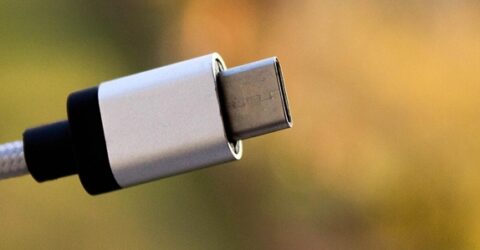Why you won’t be able to escape USB-C cables any longer
USB-C cables have finally won the battle for supremacy in a congested market. Here’s why it matters to consumers.

Like streaming video services and car parking apps, the proliferation of different device charging cables has been of more benefit to service providers than consumers.
A tangle of incompatible cables forms a plastic-coated spaghetti in drawers up and down the UK, with each cable sporting a potentially unique combination of attachments.
There are the traditional rectangular USB-A cables and the squarer B cables, as well as mini and micro USBs, plus proprietary designs like Apple Lightning cables.
Since any cable could have two different connectors at either end, the number of combinations becomes daunting, even before you consider different lengths, generations, charging speeds and three-pin plugs.
The EU set out in the early 2010s to standardise charging and connection cables with a single universal product.
Glacial progress means it’ll be 2026 before these rules are rolled out to laptops as well as smaller devices, for which there is now one mandated cable type across the EU’s 27 member states.
So what is the gold standard in device cabling, and what makes it so superior that even Apple has grudgingly adopted it on the iPhone 15?
Cable and wireless
After decades of proprietary cables and consumer frustration, USB-C cables have won out as the default method of charging electronic devices.
Their victory owes much to their design – round-edged to avoid cuts and grazes, reversible to prevent users incorrectly attempting to insert them upside down, and so forth.
These advantages increase robustness – USB-C cables are designed to cope with being plugged in 10,000 times – while data transfer rates of 10Gbps eclipse most alternatives.
A USB-C connector can singlehandedly power a docking station, housing thicker, heavier and costlier cables like HDMI leads.
All smartphones, tablets, cameras, headphones, and handheld video game consoles sold in the EU must now have a USB-C charging port, with laptops set to follow next year.
It’s been estimated that this standardisation could save the bloc’s residents €250 million a year, since every new device will charge from a single cable instead of requiring its own.
It won’t be necessary to supply charging or connector cables with new hardware as consumers will already possess them, reducing both manufacturing costs and waste through duplication.
While this will initially generate a huge amount of electronic waste as consumers bin their old cables, the long-term benefits should be compelling.
It’s been estimated the UK alone hosts 600 million unused or discarded cables – the vast majority incompatible with other hardware, or no longer needed as we replace electronics.
All USB-C cables are equal…
…But some are faster than others. Those data rates quoted a moment ago apply to the latest 3.1 Gen 2 connectors, whereas older USB-C cables may fall well below this benchmark.
New versions can transmit up to 100 watts of power, suitable for charging high-power devices like laptops as well as smaller consumer electronics, though not all cables are capable of this.
Nonetheless, peak performance places USB-C far ahead of older and more limited connection types, leading other countries – notably India – to specify USB-C cables as a legal standard.
Since the UK is not a sufficiently large market to justify bespoke hardware or manufacturing processes, it’s a standard which is also going to be imposed on us, too.
Happily, that’s no hardship – especially if it allows us to discard the inevitable tangle of incompatible and obsolete cables in our drawers and cupboards…






